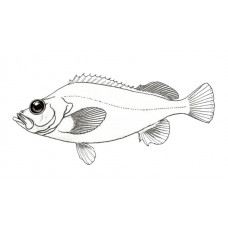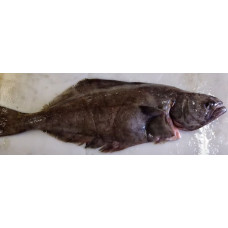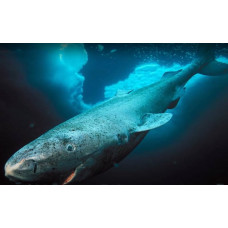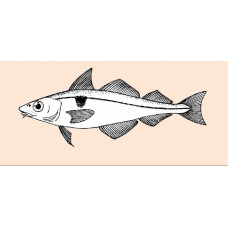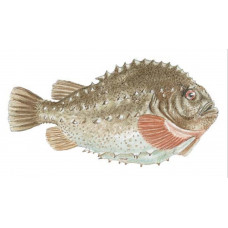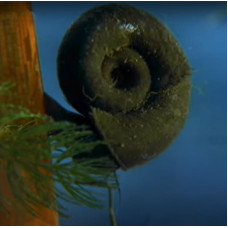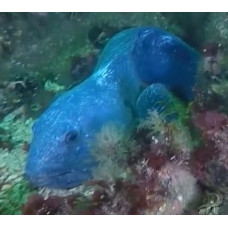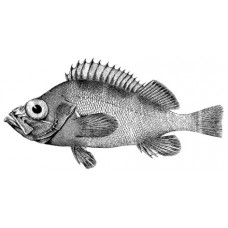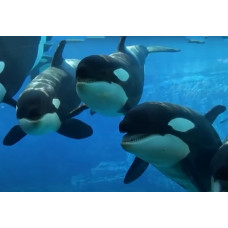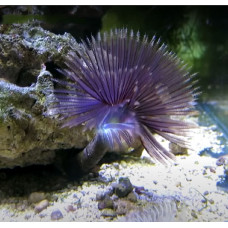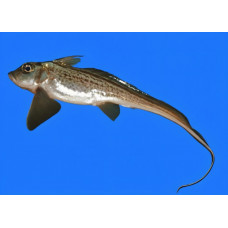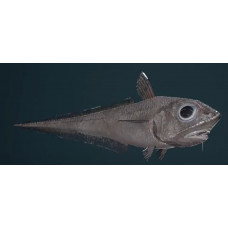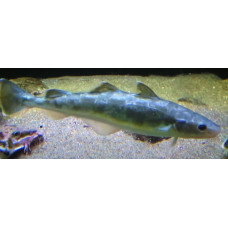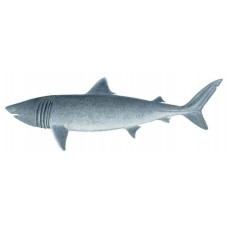Fauna of the Barents Sea
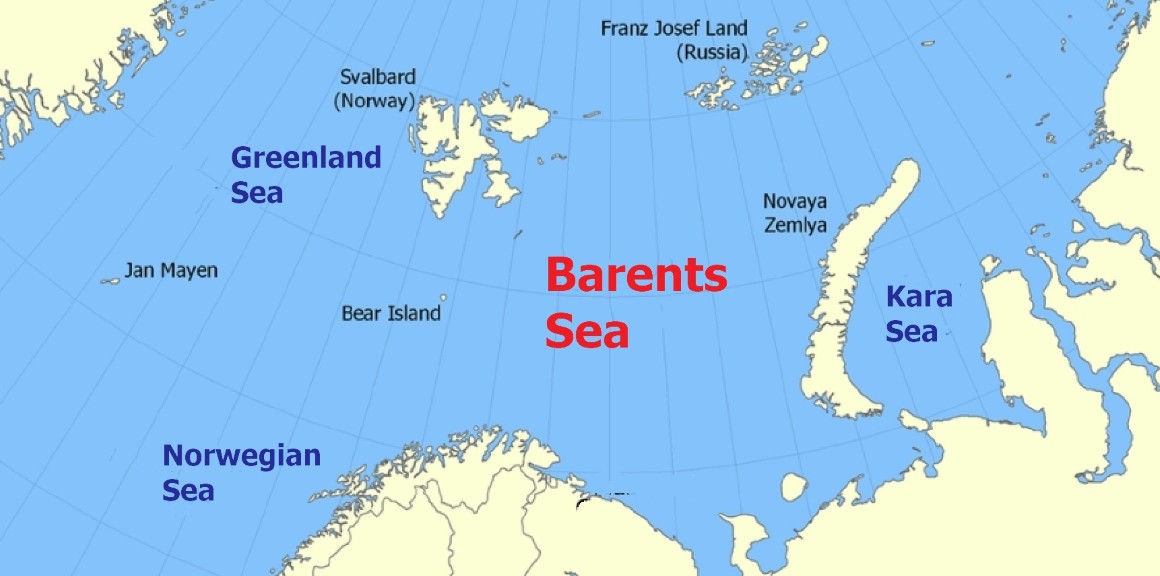 A marginal sea of the Arctic Ocean. It washes the coasts of Russia and Norway. It is bordered by the northern coast of Europe and the archipelagos of Spitsbergen, Franz-Josef-Land and Novaya Zemlya. It covers an area of 1,424,000 km² and is up to 600 metres deep. It lies on the continental shelf. The south-western part does not freeze in winter due to the influence of the North Atlantic Current. It is bordered by the Norwegian Sea basin to the west, the White Sea to the south and the Kara Sea to the east. The salinity of the surface water layer in the open sea during the year is 34.7-35.0‰ in the southwest, 33.0-34.0‰ in the east and 32.0-33.0‰ in the north. In the coastal part of the sea, the salinity decreases to 30-32 ‰ in spring and summer and increases to 34.0-34.5 ‰ at the end of winter. The climate of the sea is influenced by the warm Atlantic Ocean and the cold Arctic Ocean. Frequent intrusions of warm Atlantic cyclones and cold Arctic air determine the great variability of weather conditions. Southwesterly winds blow over the sea in winter and northeasterly winds in spring and summer. Storms are frequent. The average air temperature in the coldest month, March, varies from -22°C on the islands of the Svalbard archipelago to -2°C in the southwest. The average temperature in August is +4 to +6 °C in the north and +9 °C in the southwest. Overcast weather prevails over the sea throughout the year. Annual rainfall ranges from 300 mm in the north to 500 mm in the southwest.
A marginal sea of the Arctic Ocean. It washes the coasts of Russia and Norway. It is bordered by the northern coast of Europe and the archipelagos of Spitsbergen, Franz-Josef-Land and Novaya Zemlya. It covers an area of 1,424,000 km² and is up to 600 metres deep. It lies on the continental shelf. The south-western part does not freeze in winter due to the influence of the North Atlantic Current. It is bordered by the Norwegian Sea basin to the west, the White Sea to the south and the Kara Sea to the east. The salinity of the surface water layer in the open sea during the year is 34.7-35.0‰ in the southwest, 33.0-34.0‰ in the east and 32.0-33.0‰ in the north. In the coastal part of the sea, the salinity decreases to 30-32 ‰ in spring and summer and increases to 34.0-34.5 ‰ at the end of winter. The climate of the sea is influenced by the warm Atlantic Ocean and the cold Arctic Ocean. Frequent intrusions of warm Atlantic cyclones and cold Arctic air determine the great variability of weather conditions. Southwesterly winds blow over the sea in winter and northeasterly winds in spring and summer. Storms are frequent. The average air temperature in the coldest month, March, varies from -22°C on the islands of the Svalbard archipelago to -2°C in the southwest. The average temperature in August is +4 to +6 °C in the north and +9 °C in the southwest. Overcast weather prevails over the sea throughout the year. Annual rainfall ranges from 300 mm in the north to 500 mm in the southwest.
Common inhabitants of the Barents Sea
The Barents Sea is rich in fish species, plant and animal plankton and benthos. Algae are abundant near the southern coast. The spring phytoplankton bloom starts quite early at the ice edge. Fresh water from the melting ice forms a layer on top of the seawater. The phytoplankton bloom feeds the zooplankton. These in turn feed fish and mammals. The bottom fauna of the sea has over 1500 species, mainly echinoderms (sea urchins and starfish), molluscs, polychaetes, crustaceans, sponges, etc. There are 114 species of fish, 20 of which are commercially very important. These are Arctic cod, Haddock, Atlantic herring, Golden redfish, Beaked redfish, Norway redfish, Northern wolffish, Spotted wolffish, European plaice, Greenland halibut, Сusk, Saffron cod and others. Capelin, Blue whiting, Smelt, Arctic staghorn sculpin, Atlantic poacher, Arctic alligatorfish, Сommon seasnail and other small fish are numerous in the waters of this sea. In the XX century, the Red king crab was introduced here, which was able to adapt to the new conditions and began to reproduce intensively. In recent years, the Opilio crab has become common in the eastern part of the Barents Sea. Fishing in the Barents Sea is very important. Pinnipeds are also fished for their fat and meat.
Unusual inhabitants of the Barents Sea
The Barents Sea is home to many unusual and unique creatures. These include the Lumpfish, a fish with a pelvic fin that acts as a suction cup, allowing it to cling to rocks during storms. There is also a fearsome looking Rabbit fish with very large pectoral fins, whose lifestyle is still poorly understood. The deep-sea Roughhead grenadier has a very large head with large eyes and a thread-like appendage instead of a tail fin, giving it the same mystical, mysterious appearance. But the most bizarre and terrifying inhabitant is the Anglerfish. It can easily swallow prey beyond its size.
Mammals of the Barents Sea
The Barents Sea is home to many mammals. The Harp seal is one of the most abundant marine mammals in this sea. The Atlantic walrus, which has a large, massive body, lives in these waters. Ringed seals have also settled here. These seals, along with the Bearded seal, are commercial seal species for the native population. The Bowhead whale is endemic to Arctic and sub-Arctic waters. Common minke whale, one of the most abundant and widespread species of baleen whale in this sea. It is found in all ice-free areas. Other large inhabitants of the sea include Harbor seal, Grey seal, Hooded seal, Fin whale, Sei whale, Blue whale, Humpback whale, Beluga whale, Narwhal. Occasionally, killer whales enter the waters of the Barents Sea. All these animals excel in cold water because of the large amount of fat in the subcutaneous layer, muscles and internal organs.
Barents Sea Sharks
Among the sharks of the Barents Sea we should mention the Spiny dogfish, the Porbeagle and the Basking shark. It is very rare to see a Frilled shark that has gone astray. Requiem sharks are even rarer. White sharks have been reported in warm years. The northernmost and most cold-loving of all sharks in the Barents Sea is the Greenland shark. Attacks on humans attributed to polar sharks are extremely rare. This is because they live in cold waters where it is almost impossible to meet a human.
Golden redfish
Latin nameSebastes norvegicusOther nameRed fish, Red perch, Ocean perch, Rosefish, Norway haddock, N..
Greenland halibut
Latin nameReinhardtius hippoglossoidesOther namesGreenland turbotIdentificationThe body is elongated..
Greenland Shark
Latin nameSomniosus microcephalusOther namesGurry shark, grey shark, Somniosus microcephalusIdentifi..
Haddock
Latin name Melanogrammus aeglefinus Other names Haddie, scrod; French: eglefin; Italian: asinello..
Lumpfish
Latin name Cyclopterus lumpus Other names Lump, lumpsucker, nipisa, kiark-varrey; Italian: ciclot..
Mollusca
A type of secondary invertebrate. Probably originated in the Precambrian; several classes of mollusc..
Northern wolffish
Latin nameAnarhichas denticulatusOther namesBlue sea cat, jelly catIdentificationThe body is elongat..
Norway redfish
Latin nameSebastes viviparusOther namesSmall redfish, lesser redfish, Norway haddock, ocean perch, r..
Orca
Latin nameOrcinus orcaOther namesKiller whaleIdentificationThe Latin orca is thought to derive from ..
Polychaeta
Class of ringed worms. Known since the Cambrian. Most live in the sea - on the bottom, near the bott..
Rabbit fish
Latin nameChimaera monstrosaOther nameRat fishIdentificationThe head of the rabbit fish is thick wit..
Red king crab
Red king crab (Paralithodes camtschaticus) is a representative of the suborder Reptantia. The width ..
Roughhead grenadier
Latin nameMacrourus berglaxOther namesOnion-eye grenadier, rough-headed grenadier, rat-tail, onion-e..
Saffron cod
Latin nameEleginus gracilisOther namesWachna cod, Pacific navaga.IdentificationThe lower jaw is shor..
Shark, Basking
Latin name Cetorhinus maximus Other names No information Identification The dark gray or slate-..

